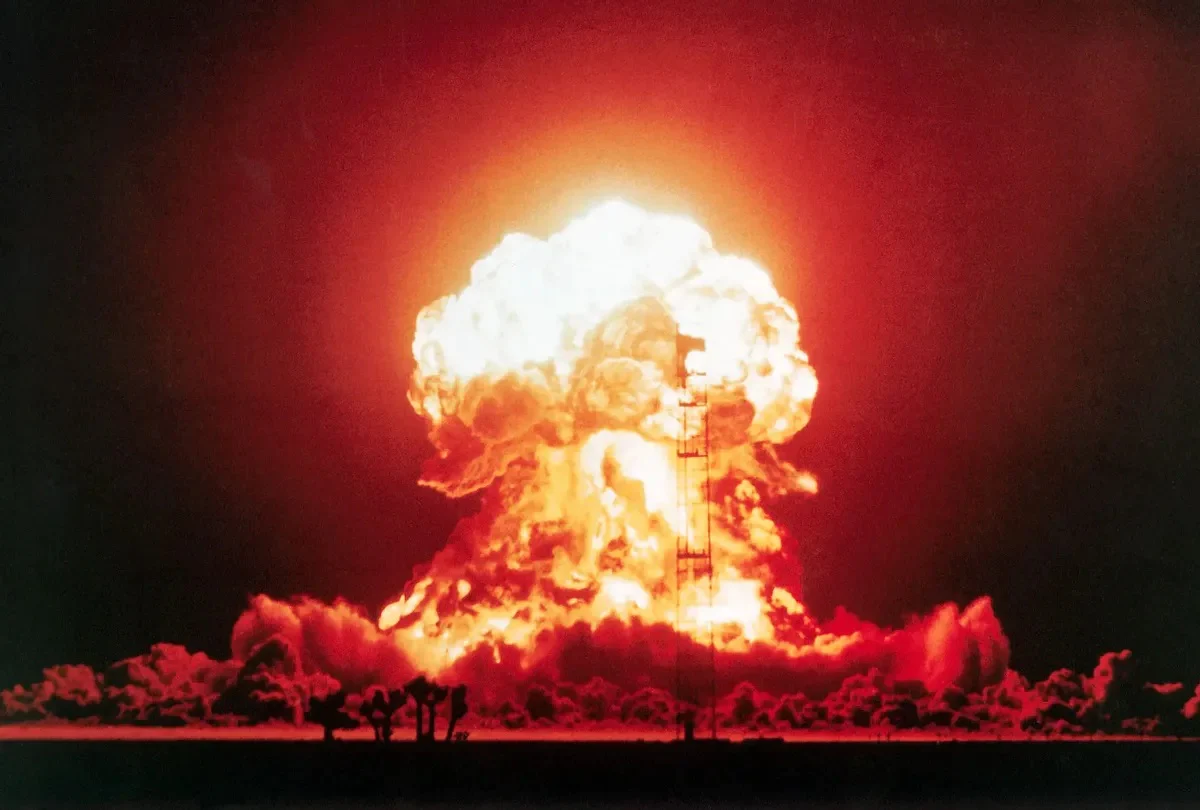London (Parliament Politics Magazine) – Given Russia’s recent nuclear threats, tips on how to stay alive during a nuclear attack are timely. Every region bordering Ukraine, especially the UK, will be affected by the use of nuclear weapons. It all starts with a burst of light brighter than the sun. Fire spreads rapidly, engulfing trees, fences, and even humans. You’re only alive because you made it inside and into the cast-iron tub just before the shock wave hit. You see your neighbourhood in flames as you stumble open your crooked front door. Let’s talk about how to survive a nuclear attack uk.
Details on How to survive a nuclear attack UK
If there is a nuclear war, the government of the United Kingdom has at least one bunker stashed away in plain sight right in the middle of London. Pindar is the name of this thing. The reference is somewhat ominous, even though it shares its name with an ancient Greek poet.
It is reported that Alexander the Great destroyed the city of Thebes in 335 BC, but he saved Pindar’s home as a sign of gratitude for some of Pindar’s poetry that lauded the Greek king’s ancestors. Pindar’s poems may be found in the Alexander the Great anthology.
The inference is, of course, that Pindar will continue to exist even if a nuclear exchange causes London to be destroyed. It is unknown whether the building was intended to be used for this purpose when it was constructed. Only a few photographs of the facility have ever been made public; the Ministry of Defence acknowledged that these photographs were taken inside Pindar in response to a request made under the Freedom of Information Act.
Pindar provides “continuity of government” in addition to being a very secure military headquarters. It is a component of the state’s strategies to guarantee that power can be maintained even during and after the most severe calamities. On the other hand, the ability of top political figures and military commanders to avert catastrophe is something very else.
Defence During The Civil War
Over the last several years, the significance of civil defence has been downgraded on the agenda in several other nations. By the 1980s, the United Kingdom had created a wide variety of civil defence readiness measures, some of which, such as regional controllers positioned all across the nation, might have assisted in maintaining the continuity of government. Others, like the air raid sirens and communication programs, were aimed squarely at the general populace.
For example, the sirens were installed in tens of thousands of sites. They might have been used as a warning system if a missile attack was about to occur or as an all-clear signal after the radiation levels had returned to normal.
Would the infrastructure built during the Cold War have been of any use if there had been a full-scale nuclear war? To our great relief, it was never tested in an actual situation.
Patricia Lewis, who directs the international security department at the policy institution Chatham House, explains that “the challenge with this specific issue is that it is so distinct from other forms of catastrophes.” “It is too much to handle.”
According to historian Matthew Grant of the University of Essex, who covered the topic in his book titled “After the Bomb: Civil Defence and Nuclear War in Britain, 1945-1968,” civil defence in Britain in the past was poorly funded, limited in scope, and slow to recognise very real threats. He wrote about the topic in his book.
And as Jennifer Cole of the Royal United Services Institute (RUSI) notes, nuclear war is no longer on the “National Risk Register” of the United Kingdom. This is even though the chance of a nuclear weapon being detonated by a terrorist organisation is deemed “low but not insignificant.”
Does anyone remember the public information leaflet called Protect and Survive? Distributed by the UK government in the 70’s during the height of the Cold War, it contained advice on how to survive a nuclear attack. I was terrified then and am feeling much the same now 😱
— Rosie Lewis (@RosieLewis64) February 12, 2022
What happens after the nuclear fallout?
Short-lived radionuclides outside the body provide the greatest radiation risk from nuclear blasts. Radioactive fission fragments with half-lives of seconds to months and soil and other materials around the explosion turned radioactive. The tremendous neutron flow of fission and fusion events poses this radiation threat.
A weapon with a fission yield of 1 million tons TNT equivalent power (1 megaton) detonated at ground level in a 15-mph wind would create fallout in an ellipse hundreds of kilometres downwind. An individual who did not find shelter within 25 minutes of the fallout would acquire a fatal radiation dosage (600 rads) 20-25 kilometres downwind. A person 40-45 miles from the fallout would have 3 hours to locate refuge. Smaller radiation dosages will sicken humans. Unless they were shielded or evacuated, everyone downwind of the burst site had little chance of survival.
Read More: Clever Ways To Afford Decent Standard of Living in London
Conclusion
If you’re wondering how to survive a nuclear attack UK? Urgent action must be taken to limit radiation exposure in the immediate aftermath of a nuclear explosion. Until the danger of contamination has passed, it is preferable to remain inside until informed otherwise. After a nuclear blast, the UK’s Department of Health and Human Services advises people to remain indoors for at least 24 hours.


